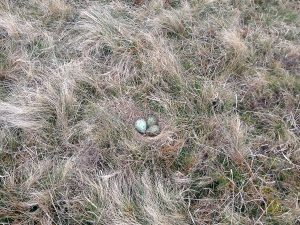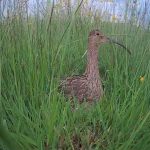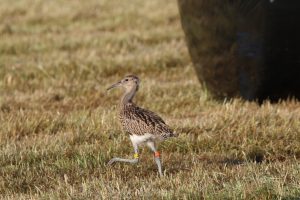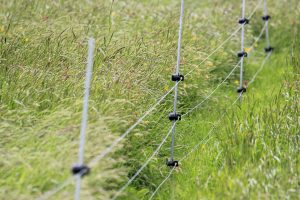CURLEW FAQs
FACTS, FIGURES AND ADVICE FOR THOSE WANTING TO HELP SUPPORT NESTING CURLEW ON THEIR LAND
 The Eurasian Curlew or, Numenius arquata, spends much of the year on coasts or estuaries, but migrates north and inland to breed on moorland or grassland.
The Eurasian Curlew or, Numenius arquata, spends much of the year on coasts or estuaries, but migrates north and inland to breed on moorland or grassland.
Curlew are territorial birds during the nesting season, but where there are higher populations will also behave colonially (act together to fend off predators and warn of danger). Even when nesting, curlew will remain gregarious if they are not threatened by the presence of another adult.
Adult birds can exceptionally live for up to 20 or even 30 years, and the UK holds the largest population of this species, but it is in dramatic decline. Curlew are generally site and partner faithful.
What do curlew need during the breeding season?
- Feeding and foraging ground: Rough damp pasture with tussocks to forage and feed in. Adults use their distinctive long bills to probe the
 ground for worms, caterpillars and invertebrates.
ground for worms, caterpillars and invertebrates. - A nesting site: Curlew will not nest in heavily stocked fields. They nest on flat ground, drier than the ground that they forage in and usually away from tall trees and shrubs that harbour predators. Curlew are faithful to their nesting sites. They will start to form a nest in grass that is about 20cm to 30cm high so that they can hide from predators, but put their heads above the grass to see what is going on.
- Safe ground for chicks to feed in: Invertebrate rich grassland. A range of sward heights to provide shelter and hiding places from predators, but not so dense that the grassland is difficult for a chick to move through.
When do they nest?
The first nests are made in April and most nests have an egg by 1st May, but a failed attempt to raise a brood may result in a second, later attempt.
Curlew are most often seen when they are foraging for food in damp meadows and marshy ground, but are a great deal more secretive in their nesting sites.
Do both birds get involved with incubating eggs and rearing chicks?
 Both male and female birds take turns to sit on the nest before eggs hatch. During that two to three hour shift the partner leaves to feed. The main visible difference between the sexes is that the female has a longer bill, but the female is also larger than the male. Juveniles have much shorter bills.
Both male and female birds take turns to sit on the nest before eggs hatch. During that two to three hour shift the partner leaves to feed. The main visible difference between the sexes is that the female has a longer bill, but the female is also larger than the male. Juveniles have much shorter bills.
Once the chicks have hatched the female leaves the male to do most of the rearing.
What does a nest look like?
The nest is really a shallow cup formed in the grass sward by a curlew swivelling and pressing down to flatten the grass. 
A curlew usually lays up to four eggs, but fewer eggs may be laid, particularly if birds are older or the nest is a second attempt replacing an earlier loss.
The nests are usually fairly difficult to find. Curlew are territorial birds and very secretive of their nest sites, landing a long way from them and walking through long grass to try and disguise the exact location.
 What is the period from nesting to fledging?
What is the period from nesting to fledging?
Eggs are incubated for 27-29 days (about four weeks).
From hatching to fledging the period is about 42 days (around 6 weeks), but it can take more or less time depending on their development.
If a nest fails because the chicks are lost a pair of curlews will not make a second attempt to nest.
What is the date at which most chicks would have been expected to fledge?
In favourable circumstances, chicks would fledge from a first nest around the middle of July.
As the adult population ages and nests become more vulnerable to predation as numbers decrease, more nests will be second attempts and chicks may not fledge until as late as the middle of August.
After migrating to winter grounds, fledged chicks will spend at least a year there before returning to breed.
Why do I see and hear large groups of curlew in the early spring and again at various times during the nesting season?
At the beginning and end of the season groups of birds can be seen in places where they rest to feed on their migratory routes. Sometimes these birds are travelling back and forth to local rivers and wetlands where they can roost safely at night.
Groups of failed breeders can group together and display and call before returning to their over-wintering sites.
HOW TO HELP CURLEW NESTING ON YOUR LAND
If I know that the field that the curlew usually nest in is unsuitable, how can I encourage them to nest in the adjacent, more suitable field?
Leave stock on the field that will be cut earlier or subject to late spring and early summer cultivation. Manage the adjacent field so that the grass sward is about 20cm to 30cm high at the end of April, and so that all agricultural operations have been completed by about mid-April. Avoid commencing again until later in the summer.
What is the latest date that I can keep stock on, or roll, fertilise or harrow the field that the curlews nest in so as not to cause disturbance?
Mid to late April, depending on the weather.
If I find a nest can I mark it up to protect it and then just work around it?
 Predators are drawn to areas that are distinctive in a field and will almost certainly investigate markers or an area of long grass in the middle of an otherwise cut or grazed field.
Predators are drawn to areas that are distinctive in a field and will almost certainly investigate markers or an area of long grass in the middle of an otherwise cut or grazed field.
A stick or upright marker would provide the ideal perch for a predatory crow and draw the attention of predators.
Nests can be marked along the boundary line of fields to give a grid point.
Ideally, a whole field would look similar to the nest site to deter predators
What about protecting a site with temporary electric fencing?
The Curlew Country project has trialled temporary electric fencing plots around curlew nest sites with some success, but these should only be put up and maintained by those with experience of working with ground-nesting birds. If you find a nest on your land and would like to protect it in this way, please contact the Curlew Country team.
